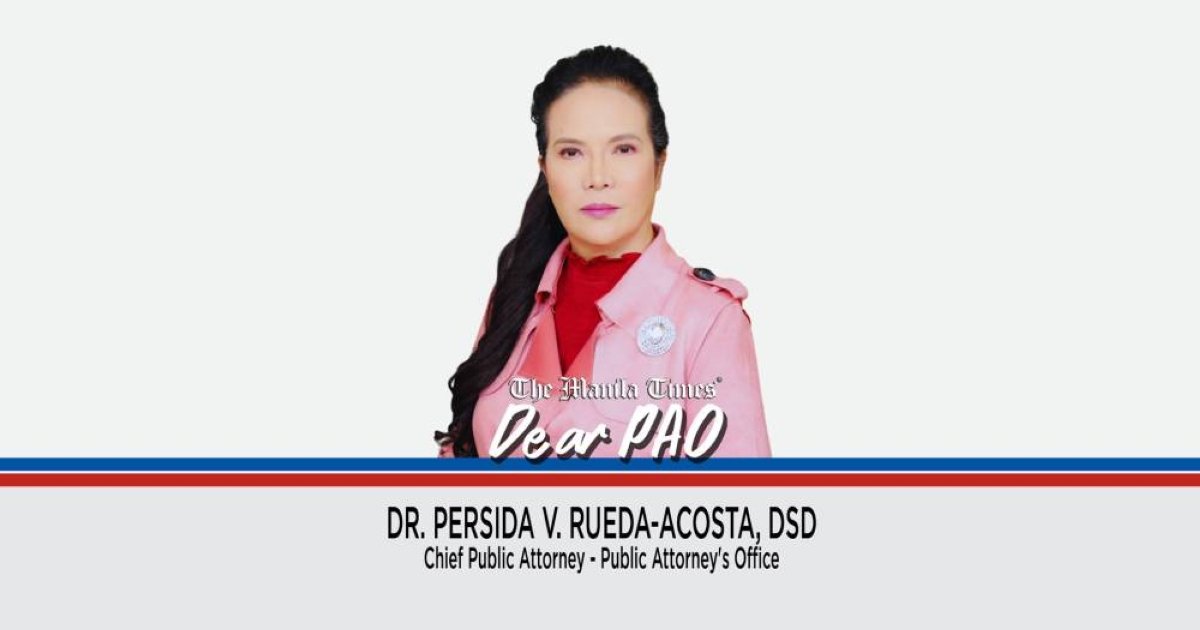Dear PAO,
My brother was employed as a laborer or “kargador” in a rice market business. One day, while he was physically unloading sacks of rice from their delivery truck, he was boxed by an unprovoked drunk person who ran amok. He continued working but, upon his return, he was boxed again. This time, he dropped the sack of rice he was carrying and punched the aggressor on the nose, causing him to fall and hit a concrete pavement, which caused his death. In convicting my brother of homicide, the trial court explained that he acted in retaliation, and not in self-defense. How can we weigh the gravity of aggression and the reasonableness of the means employed to repel the attack to justify self-defense?
Warren
Dear Warren,

Under Article 11 of the Revised Penal Code, the elements of self-defense are the following: (1) unlawful aggression on the part of the victim; (2) reasonable necessity of the means employed to prevent or repel such aggression; and (3) lack of sufficient provocation on the part of the person defending one’s self.
For unlawful aggression to exist, there must be a real danger to the life and personal safety of the person resorting to self-defense. However, in determining the gravity of the aggression and the reasonableness of the means employed to prevent or repel the attack, it must be viewed from the standpoint of the person defending himself in relation to the circumstances as he perceived them at the time of the incident.
In its recent decision in the case of Rulie Camillo vs. People (GR 260353, Feb. 8, 2023, Ponente: Associate Justice Mario Lopez), the Supreme Court explained:
“In Senoja v. People, we instructed that unlawful aggression exists if persons invoking self-defense ‘believe, in due exercise of [their] reason, [that their lives or limbs] are in danger[.] xxx the guilt of the accused should depend upon the circumstances as they reasonably appear to [the accused].’ We reiterated this in People v. Olarbe, in which we declared that ‘the circumstances as the accused perceived them at the time of the incident, not as others perceive them, should be the bases for determining the merits of the plea.’ x x x
“We disagree that unlawful aggression had ceased when Rulie had put down the sacks of rice. All the eyewitnesses attested that Noel did not stop attacking Rulie after the latter put down the first and second sacks of rice. Noel was still in a fighting stance until he met the wrath of Rulie’s defense. In his right, Rulie had to enable himself to repel the unlawful aggression with reasonable force. Otherwise, he might lose his balance and incur fatal injuries, apart from the ones caused by Noel’s indiscriminate first blows.
“The flaw in the trial court and the CA’s identical reasoning is that it is a product of tranquil minds basking in the comfort of judicial chambers. Unlike magistrates, Rulie had no equanimity to think, calculate and make comparisons that can easily be made in the calmness of reason. Confronted with an immediate threat and danger to his life and limb, he had no choice but to defend himself against the reckless assailant. As we have emphasized in Olarbe:
“In judging pleas of self-defense and defense of stranger, the courts should not demand that the accused conduct [themselves] with the poise of [persons] not under imminent threat of fatal harm. [The accused] had no time to reflect, and to reason out [their] responses. [They] had to be quick, and [their] responses should be commensurate to the imminent harm. This is the only way to judge them, for the law of nature — the foundation of the privilege to use all reasonable means to repel an aggression that endangers one’s own life and the lives of others — did not require [them] to use unerring judgment when [they] had reasonable grounds to believe [themselves] in apparent danger of losing [their lives] and suffering great bodily injury. The test is whether [the accused’s] subjective belief as to the imminence and seriousness of the danger was reasonable or not, and the reasonableness of [their] belief must be viewed from [their] standpoint at the time [they] acted.”
Following the foregoing, the imminence of the threat of the attacker and the reasonableness of your brother’s response to prevent or repel such an attack must be viewed from his point of view in relation to the circumstances as he perceived them to be, at the time of the incident. To reiterate, during the time your brother was under imminent threat of fatal harm, he had no time to reflect and reason out his responses.
We hope that we were able to answer your queries. Please be reminded that this advice is based solely on the facts you have narrated and our appreciation of the same. Our opinion may vary when other facts are changed or elaborated on.
Editor’s note: Dear PAO is a daily column of the Public Attorney’s Office. Questions for Chief Acosta may be sent to [email protected]










